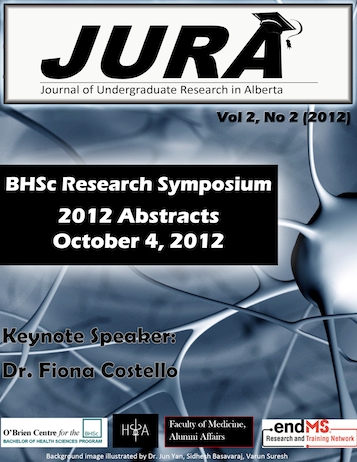ASSESMENT OF HOST INNATE IMMUNITY IN THE PATHOGENESIS OF THE HEMOLYTIC-UREMIC SYNDROME
Keywords:
Hemolytic-uremic syndrome, HUS, Shiga Toxin, Stx,Abstract
Shiga toxins (Stx1 and Stx2) are a major pathogenic factor in enterohaemorrhagic Escherichia coli O157: H7 infections that cause haemolytic-uremic syndrome, a serious extraintestinal complication (1). Shiga toxins consist of a a globotriaosylceramide (Gb(3))-binding B subunit pentamer and an enzymic A subunit (2). The ability for Shiga toxins to bind to the surface of human neutrophils, a potential mediator for toxin translocation and HUS pathogenesis, has been the object of controversy. It is demonstrated in this study that Stx2 elicits a reproducible and consistent effect on isolated human neutrophils which do not express Gb3, confirming previous work that Stx2 binds in a non-classic mechanism to these cells. Stx2 induced a greater increase in the expression of a specific inflammatory profile than Stx1 alone, particularly in TNF-alpha expression (P< 0.05, Student’s t-test). Moreover, co-stimulating neutrophils with LPS appeared to nullify the Stx2 affect. In contrast, co-stimulating neutrophils with Stx1 and LPS appeared to increase the expression of IL-8 (P<0.05, Student’s t-test). This observed activation of neutrophils and subsequent inflammatory profile provides a better understanding of the role of host innate immunity in the pathogenesis of HUS.Downloads
Download data is not yet available.
References
1.Karmali, M. A., Petric, M., Lim, C., Fleming, P. C. & Steele, B. T. (1983). Escherichia coli cytotoxin, haemolytic-uraemic syndrome, and haemorrhagic colitis. Lancet 2, 1299–1300.
2.Fraser, M. E., Fujinaga, M., Cherney, M. M., Melton-Celsa, A. R., Twiddy, E. M., O'Brien, A. D. & James, M. N. (2004). Structure of Shiga toxin type 2 (Stx2) from Escherichia coli O157 : H7. J Biol Chem 279, 27511–27517.
2.Fraser, M. E., Fujinaga, M., Cherney, M. M., Melton-Celsa, A. R., Twiddy, E. M., O'Brien, A. D. & James, M. N. (2004). Structure of Shiga toxin type 2 (Stx2) from Escherichia coli O157 : H7. J Biol Chem 279, 27511–27517.
Downloads
Published
2012-12-05
Issue
Section
Articles
License
Authors retain all rights to their research work. Articles may be submitted to and accepted in other journals subsequent to publishing in JURA. Our only condition is that articles cannot be used in another undergraduate journal. Authors must be aware, however, that professional journals may refuse articles submitted or accepted elsewhere—JURA included.


